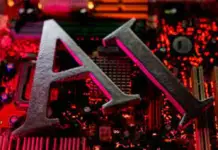Eid ul-Adha is a significant Muslim festival, honoring Prophet Ibrahim’s willingness to sacrifice his son. Muslims worldwide gather in prayer, share meals, and engage in acts of charity and unity. It is a time of reflection, gratitude, and celebration The celebration of Eid-ul-Adha, also known as the Feast of Sacrifice, can differ in various ways between childhood and adulthood. Here are some key differences:
1. Understanding and Awareness:
In childhood, the understanding of Eid ul-Adha may be limited to the fact that it is a festive occasion with special prayers, delicious food, and the exchange of gifts. Children may not fully grasp the religious significance or the historical context behind the festival. As individuals grow into ad organizing and financing the sacrificial animal, planning family gatherings, and ensuring the smooth execution of the religious rituals. In adulthood, they gain a deeper understanding of the religious and cultural aspects of Eid ul-Adha. They learn about the story of Prophet Ibrahim’s willingness to sacrifice his son and the lessons of sacrifice, obedience, and devotion to God.
2. Responsibilities:
During childhood, the responsibilities related to Eid-ul-Adha are typically minimal. Children may be involved in minor tasks like helping with decorations or accompanying their parents to the mosque. In adulthood, individuals take on more significant responsibilities, such as organizing the sacrificial animal, managing finances for the sacrifice, and arranging family gatherings or communal feasts. They may also contribute to charitable causes, donate money or meat to those in need, and actively engage in acts of kindness and generosity during the festival.
3. Financial Contributions:
During childhood, it is common for children to receive financial gifts or Eidi from their elders. However, as they grow into adulthood, they undergo a significant transition, moving from being recipients to becoming contributors themselves. In various cultural traditions, it is expected that adults give Eidi to younger family members, particularly children, as a symbol of affection and well wishes.
4. Sacrifice Participation:
While children may witness the process of animal sacrifice during Eid-ul-Adha, they are typically not directly involved in the act. In adulthood, individuals have the opportunity to actively participate in the sacrifice, either by performing it themselves or overseeing the process. This experience can deepen their understanding of the religious significance and foster a sense of responsibility.
5. Social Connections and Community Engagement:
Childhood celebrations of Eid ul-Adha are often centered around immediate family members and close relatives. As individuals enter adulthood, they may expand their social circles and engage more actively with the community during Eid ul-Adha. This can include attending communal prayers at the mosque, participating in community service initiatives, and connecting with a broader network of friends and acquaintances to exchange greetings and good wishes.
6. Family Dynamics:
Childhood Eid-ul-Adha celebrations are often centered around the immediate family, with parents and siblings being the primary focus. In adulthood, the focus expands to extended family and community, as adults take on the role of hosting gatherings, inviting relatives and friends, and fostering a sense of unity and communal spirit.
7. Spiritual Reflection:
As adults grow in wisdom and experience, the observance of Eid-ul-Adha takes on a profound significance. It becomes a time for introspection and spiritual contemplation, where individuals delve into the profound teachings of sacrifice, empathy, and gratitude. These lessons serve as guiding principles for their daily lives, as they seek to embody these virtues in their interactions with others and in their personal growth. This transformative aspect of the celebration becomes increasingly prominent as one enters adulthood.
Overall, the transition from childhood to adulthood brings about a shift in the understanding, responsibilities, and experiences associated with Eid-ul-Adha. While childhood celebrations may be more focused on joy and receiving, adulthood brings a greater sense of responsibility, participation, and spiritual growth during this important religious observance.







